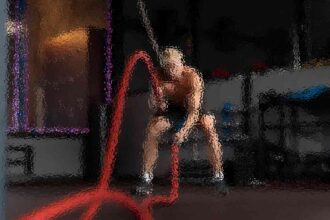Welcome to the ultimate guide for maximizing your gym experience! At Top Gym , we understand the importance of efficiency and effectiveness in every workout session. Whether you’re a seasoned gym-goer or just starting your fitness journey, our expert team is here to empower you with 15 invaluable tips to supercharge your results.
1. Set Clear Goals
The foundation of a successful fitness journey begins with clear and achievable goals. Take the time to identify what you want to accomplish, whether it’s gaining muscle, losing weight, or improving overall health. By establishing specific objectives, you’ll have a clear roadmap to guide your workouts and measure your progress along the way.
2. Create a Tailored Workout Plan
One size does not fit all when it comes to fitness. A personalized workout plan tailored to your individual needs and preferences is essential for long-term success. Consult with a knowledgeable fitness professional who can assess your current fitness level, discuss your goals, and design a program that addresses your unique strengths and challenges. Whether you prefer weightlifting, cardio, or group classes, a customized plan will keep you motivated and engaged.
3. Prioritize Proper Form
Proper form is non-negotiable when it comes to exercise. Whether you’re lifting weights, performing bodyweight exercises, or using gym equipment, maintaining correct form is crucial for maximizing results and minimizing the risk of injury. Focus on executing each movement with precision, paying attention to alignment, posture, and muscle engagement. If you’re unsure about proper form, don’t hesitate to ask a fitness professional for guidance or schedule a session with a personal trainer.
4. Warm Up Wisely
A proper warm-up sets the stage for a successful workout by preparing your body for the demands ahead. Begin your routine with dynamic movements that increase blood flow and activate key muscle groups. Incorporate exercises that mimic the movements you’ll be performing during your workout, such as leg swings, arm circles, and hip openers. Gradually increase the intensity as you warm up, ensuring that your muscles are primed and ready for action.
5. Incorporate Compound Exercises
Compound exercises are the bread and butter of any effective workout routine. These multi-joint movements recruit multiple muscle groups simultaneously, allowing you to get more bang for your buck in less time. Incorporate compound exercises like squats, deadlifts, lunges, push-ups, and rows into your workouts to maximize calorie burn, build strength, and improve functional fitness. Not only do compound exercises deliver impressive results, but they also provide a comprehensive full-body workout that targets multiple areas simultaneously.
6. Embrace Progressive Overload
Progressive overload is the secret sauce for continual progress and growth in the gym. This principle involves gradually increasing the intensity, volume, or resistance of your workouts over time to stimulate muscle adaptation and growth. Whether you’re adding weight to the bar, increasing the number of repetitions, or shortening rest periods between sets, consistently challenging your body with progressive overload is key to achieving your fitness goals. Keep a workout journal to track your progress and ensure that you’re continually pushing your limits and surpassing previous milestones.
7. Fuel Your Body Properly
Nutrition plays a critical role in supporting your fitness goals and optimizing performance in the gym. To fuel your workouts and promote muscle growth and recovery, focus on consuming a balanced diet rich in lean protein, complex carbohydrates, healthy fats, and essential vitamins and minerals. Prioritize nutrient-dense whole foods such as lean meats, fish, eggs, fruits, vegetables, whole grains, nuts, and seeds. Stay hydrated by drinking plenty of water throughout the day, especially before, during, and after your workouts to maintain optimal hydration levels and support peak performance.
8. Hydrate, Hydrate, Hydrate
Proper hydration is essential for overall health and performance, especially during intense exercise sessions. Water plays a crucial role in regulating body temperature, lubricating joints, transporting nutrients, and flushing out toxins from the body. Dehydration can lead to decreased energy levels, impaired cognitive function, and diminished exercise performance. Aim to drink at least eight glasses of water per day, and increase your intake during exercise to replace fluids lost through sweat. If you’re engaging in prolonged or intense workouts, consider supplementing with electrolyte-rich beverages to replenish sodium, potassium, and other essential minerals lost through sweat.
9. Incorporate Active Recovery
Rest and recovery are essential components of any well-rounded fitness program. While it’s tempting to push yourself to the limit every time you hit the gym, overtraining can lead to burnout, injury, and stalled progress. Incorporate active recovery days into your weekly routine to give your body time to repair and rebuild. Engage in low-intensity activities such as walking, swimming, yoga, or foam rolling to promote circulation, reduce muscle soreness, and enhance recovery between workouts. Listen to your body and prioritize rest when needed to avoid overtraining and keep your workouts sustainable and enjoyable in the long run.
10. Listen to Your Body
Your body is incredibly intuitive and will often provide valuable feedback during workouts. Pay attention to signals such as pain, discomfort, fatigue, and energy levels, and adjust your training intensity or volume accordingly. While it’s essential to push yourself outside your comfort zone to see progress, it’s equally important to recognize when to dial it back and prioritize rest and recovery. Ignoring warning signs and pushing through pain can lead to injury and setbacks, derailing your fitness goals and hindering your progress. Trust your instincts and prioritize your long-term health and well-being above all else.
11. Vary Your Routine
Variety is the spice of life, especially when it comes to fitness. While consistency is crucial for progress, performing the same workouts day in and day out can lead to plateaus and boredom. Keep your workouts fresh and exciting by incorporating a variety of exercises, equipment, training modalities, and workout formats into your routine. Experiment with different styles of training, such as strength training, HIIT, circuit training, plyometrics, and flexibility training, to challenge your body in new ways and prevent adaptation. Not only will varying your routine keep you mentally engaged and motivated, but it will also ensure that you continue to make progress toward your goals.
12. Invest in Quality Gear
The right workout gear can make all the difference in your performance and comfort during exercise. Invest in high-quality, functional apparel and equipment that enhances your workout experience and supports your fitness goals. Choose breathable fabrics that wick away sweat and keep you cool and dry during intense workouts. Invest in supportive footwear that provides stability, cushioning, and traction to protect your feet and ankles during high-impact activities. Consider accessories such as resistance bands, foam rollers, and yoga mats to add variety to your workouts and improve recovery. While quality gear may come with a higher price tag, the investment is well worth it for the comfort, durability, and performance benefits it provides.
13. Track Your Progress
Monitoring your progress is essential for staying motivated and accountable on your fitness journey. Keep a detailed record of your workouts, including exercises, sets, reps, weights, and rest periods. Track key performance indicators such as strength gains, endurance improvements, body measurements, and changes in body composition over time. Celebrate your achievements and milestones, no matter how small, and use them as motivation to keep pushing yourself toward your goals. Regular progress assessments will help you identify areas for improvement, adjust your training program as needed, and stay on track to achieve your desired results.
14. Stay Consistent
Consistency is the key to success in any fitness endeavor. While it’s natural to experience fluctuations in motivation, energy levels, and progress, it’s essential to stay committed to your goals and prioritize consistency in your workouts. Make exercise a non-negotiable part of your daily routine, scheduling regular gym sessions just like you would any other appointment or commitment. Set realistic expectations for yourself and focus on making small, sustainable changes that you can maintain over the long term. Remember that progress takes time and patience, and staying consistent with your efforts will ultimately pay off in the form of improved health, fitness, and overall well-being.
15. Seek Professional Guidance
When in doubt, don’t hesitate to seek guidance from certified fitness professionals. Whether you’re struggling with proper form, hitting a plateau, or dealing with an injury, expert advice and support can make all the difference in your fitness journey. Schedule a session with a personal trainer or coach who can assess your individual needs, provide personalized guidance and feedback, and help you overcome any obstacles standing in your way. Invest in your health and well-being by prioritizing education, support, and accountability from knowledgeable professionals who are dedicated to helping you achieve your fitness goals.
Conclusion
Congratulations! You’re now armed with 15 expert tips to take your gym workouts to the next level and unleash your full potential. By implementing these strategies into your routine, you’ll not only maximize your results but also enjoy a more fulfilling and rewarding fitness journey. Remember to set clear goals, prioritize proper form, fuel your body with nutritious foods, and stay consistent with your efforts. With dedication, perseverance, and the guidance of our expert team at Top Gym, there’s no limit to what you can achieve. Get ready to crush your fitness goals and become the best version of yourself!
Frequently Asked Questions (FAQs)
Q1: How many times a week should I go to the gym?
A1: The frequency of your gym visits depends on your individual goals, schedule, and level of fitness. For most people, aiming for 3 to 5 workouts per week is a good starting point. However, it’s essential to listen to your body and avoid overtraining. Consistency is key, so find a schedule that works for you and stick to it.
Q2: Should I do cardio or strength training?
A2: Both cardio and strength training offer unique benefits and should ideally be included in your workout routine. Cardio exercises like running, cycling, or swimming improve cardiovascular health, burn calories, and increase endurance. Strength training, on the other hand, builds muscle mass, improves strength, and boosts metabolism. To maximize results, aim for a balanced approach that includes a mix of both cardio and strength training exercises.
Q3: How long should my workouts be?
A3: The duration of your workouts depends on your fitness level, goals, and schedule. A typical gym session can range from 30 minutes to 90 minutes, including warm-up, workout, and cool-down. Focus on quality over quantity, ensuring that each workout is efficient and effective. If you’re short on time, prioritize compound exercises and high-intensity intervals to make the most of your gym session.
Q4: What should I eat before and after a workout?
A4: Pre-workout nutrition is essential for fueling your workouts and maximizing performance. Aim to consume a balanced meal or snack containing carbohydrates and protein 1 to 3 hours before exercise to provide sustained energy and support muscle repair. After your workout, refuel with a combination of protein and carbohydrates to replenish glycogen stores and facilitate muscle recovery. Examples include a protein shake with fruit, Greek yogurt with granola, or a turkey and avocado sandwich on whole-grain bread.
Q5: How can I prevent injuries during workouts?
A5: Injury prevention starts with proper warm-up and stretching to prepare your muscles and joints for exercise. Focus on maintaining good form throughout your workouts, avoiding sudden or jerky movements that can strain muscles or joints. Incorporate rest days and active recovery to allow your body time to repair and rebuild. Listen to your body’s cues and avoid pushing through pain or discomfort. If you’re unsure about proper technique or dealing with a specific injury, consult with a fitness professional or physical therapist for guidance.
Q6: How can I stay motivated to exercise regularly?
A6: Staying motivated to exercise regularly can be challenging, but there are several strategies you can use to stay on track. Set specific, measurable goals that provide direction and motivation. Find activities you enjoy and mix up your routine to keep things interesting. Surround yourself with supportive friends, family, or workout buddies who can hold you accountable and provide encouragement. Celebrate your progress and reward yourself for reaching milestones along the way. Remember that consistency is key, and every workout brings you one step closer to your goals.
Q7: Can I still see results if I only have limited time to exercise?
A7: Absolutely! While longer workouts may allow for more comprehensive training sessions, even short, focused workouts can yield significant results when done consistently. Prioritize compound exercises that target multiple muscle groups simultaneously, and incorporate high-intensity intervals to maximize calorie burn and metabolic efficiency. Focus on quality over quantity, making the most of the time you have available to exercise. Consistency is key, so make it a priority to stay active and make every workout count.
Q8: How do I know if I’m making progress?
A8: Tracking your progress is essential for staying motivated and gauging the effectiveness of your workouts. Keep a workout journal or use a fitness tracking app to record key metrics such as weight lifted, repetitions performed, workout duration, and perceived exertion level. Take regular measurements of your body composition, including weight, body fat percentage, and measurements of key body parts. Celebrate small victories along the way, such as increased strength, improved endurance, or changes in body composition. Remember that progress may not always be linear, but staying consistent and focused on your goals will ultimately lead to success.
Q9: Is it necessary to hire a personal trainer?
A9: While hiring a personal trainer can offer many benefits, including personalized guidance, accountability, and motivation, it’s not necessary for everyone. If you’re new to exercise or unsure about proper technique, working with a qualified fitness professional can help you learn the basics and avoid injury. A personal trainer can also design a customized workout program tailored to your goals, preferences, and limitations. However, if you’re self-motivated and knowledgeable about exercise, you may be able to achieve your goals on your own with proper research and dedication.
Q10: What should I do if I hit a plateau in my progress?
A10: Plateaus are a natural part of the fitness journey and can occur for various reasons, including overtraining, lack of variety in your workouts, or inadequate recovery. If you find yourself stuck in a rut, consider making adjustments to your workout routine, such as increasing the intensity, changing exercises, or incorporating new training modalities. Focus on challenging your body in different ways to stimulate adaptation and break through plateaus. Additionally, prioritize rest and recovery, ensuring that you’re giving your body the time it needs to repair and rebuild between workouts. If you’re struggling to overcome a plateau on your own, consider seeking guidance from a fitness professional who can provide personalized advice and support.
With these comprehensive answers to your frequently asked questions, you’re now equipped with the knowledge and strategies to overcome common challenges, maximize your results, and achieve your fitness goals. Remember to listen to your body, stay consistent with your efforts, and seek guidance when needed from qualified fitness professionals. Your journey to optimal health and fitness starts now!



